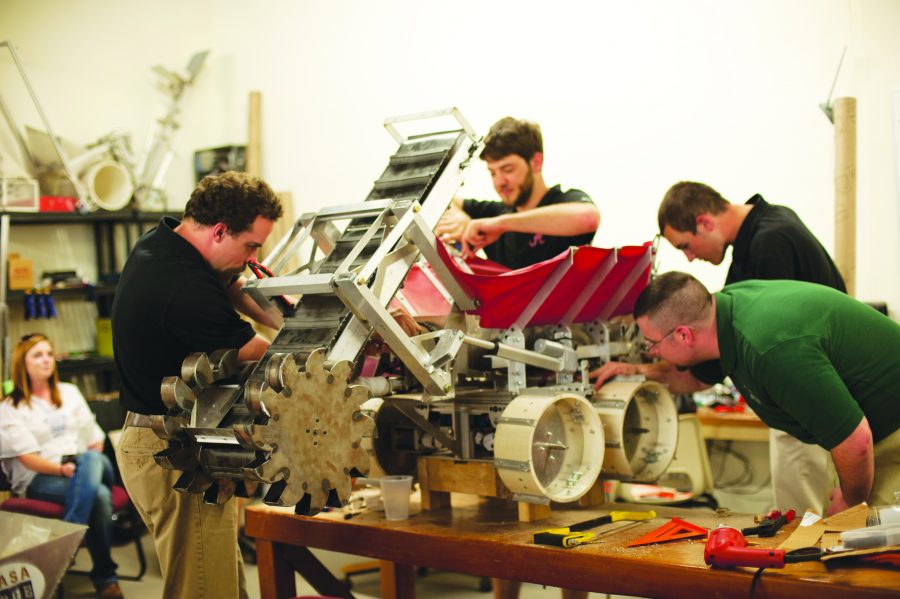 The University of Alabama made huge waves in space science recently as a team of students from the University of Alabama and Shelton State Community College took home first prize in the NASA Lunabotics Mining Competition.
The University of Alabama made huge waves in space science recently as a team of students from the University of Alabama and Shelton State Community College took home first prize in the NASA Lunabotics Mining Competition.
The competition, from May 21 to May 27, was held at the Kennedy Space Center in Cape Canaveral, Fla., where the Alabama team won both the overall competition and the team demonstration competition.
Named Alabama Lunabotics, the team includes both undergraduate and graduate level students competing against 55 other teams from around the world. The teams involved in the competition were tasked with a singular objective, in which Alabama students achieved above and beyond the other competitors: To design and build the most effective remote-controlled excavator possible.
“The level of competition at this event was extremely intense,” said Kenneth Ricks, faculty advisor for Alabama Lunabotics. “Many of the teams in attendance came from top engineering and mining universities in either the United States or elsewhere in the world. Just qualifying for the event was difficult enough, but winning it is an entirely different level of achievement.”
Exactly how the excavators were judged depended on a strict set of guidelines and criteria that appointed judges took into consideration when assessing each robot’s capacity to perform.
Known as lunabots, these robotic constructs were tasked with collecting a minimum of 10 kilograms of imitation lunar material within 10 minutes. Each team was given two opportunities to complete this phase of the evaluation, and many of the teams were unable to even complete this task once. Alabama Lunabotics completed the task in both attempts.
The amount of material collected, as well as how quickly the lunabot collected the material, is not the only thing that was closely observed by the judges. Judging of the lunabots also included rating the design quality of the individual constructs. How well the individual teams were able to conform to the weight and size limitations for the lunabots, along with the amount of communication necessary between the operators and their creations, both played a pivotal role in deciding which team would be taking home first prize.
“It was a great event, but seeing our hard work pay off made it all that much better,” said Justin Headley, team member and co-team leader for Alabama Lunabotics.
The teams themselves were also judged alongside their inventions. How well the lunabot was engineered on paper, community outreach, team spirit and the multidisciplinary level of the team all helped to provide a score to grade the individual teams.
“Something that really made our team stand out and ultimately helped in winning the competition was the level of professionalism exhibited by the team members,” said Adam Melton, a team leader for Alabama Lunabotics. “We began work on our design around this time last year. With as many interchangeable parts as we engineered, we were able to tailor-make our robot to obtain as high of a score as possible in the competition.”









